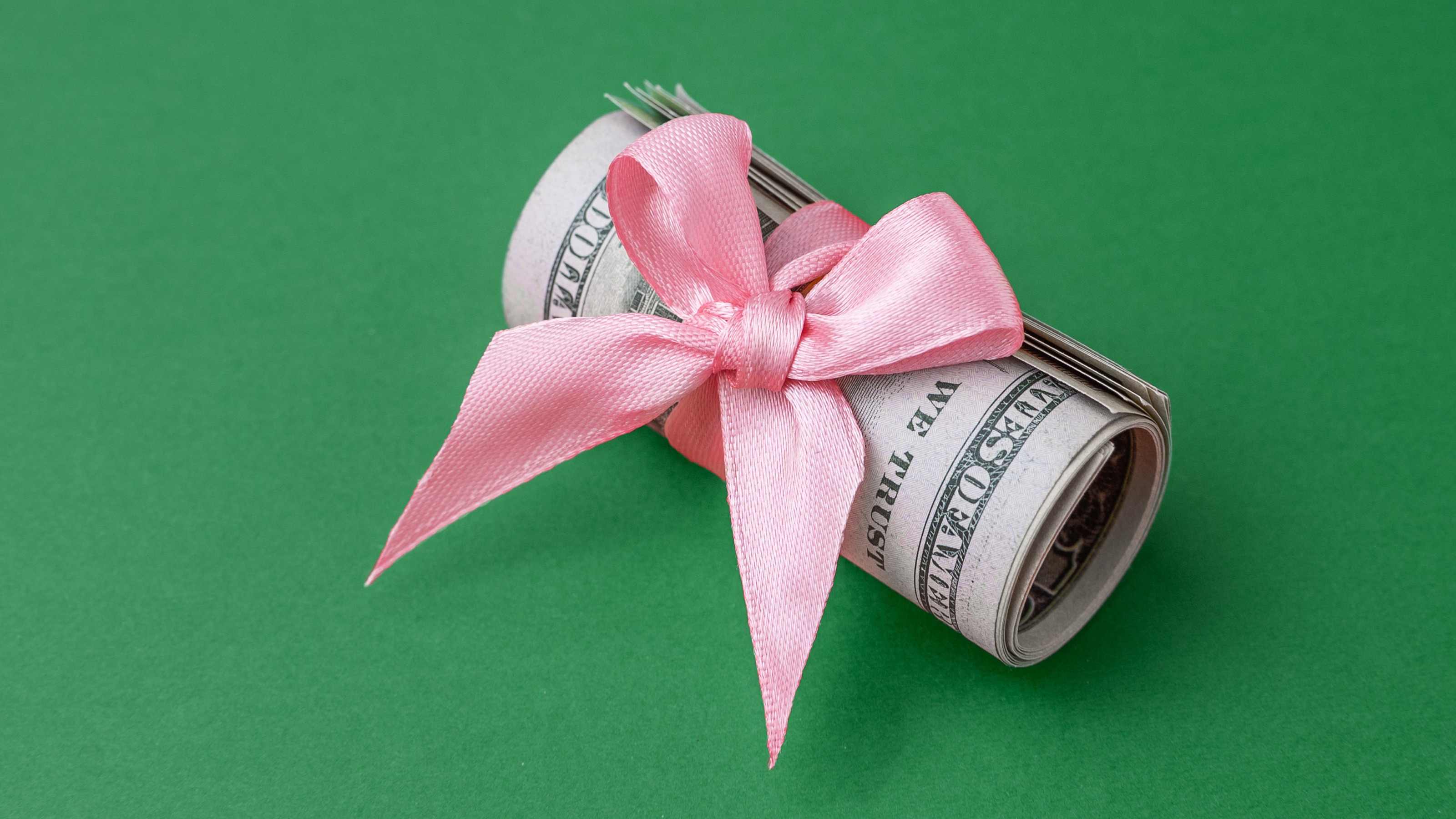Wait, My Homeowners Insurance Limits What?
You might be surprised by the limits on what your homeowners policy covers, but there’s a reason for that, and there’s also something you can do about it.

When you purchase homeowners insurance, the general expectation is that you will be insured for loss or damage to your home. You know, the actual house itself, the structure. Sure, likely we also assume other things will be included in the policy, such as our lovely infinity pool, the expensive landscaping, the gazebo.
When we look at our insurance policy, we see a coverage type called personal property coverage. That certainly sounds straightforward enough, right? That’s coverage for your stuff. Your tchotchkes, furniture, clothes, computers, pictures, necklaces, the things that you will inevitably box up and schlep from house to house for your entire life. There is something you need to be aware of. Of all the items listed above, many of them have limitations on how much your homeowners insurance policy will pay in the event of a loss. Let’s touch base on a few of the more common categories.
Whether you are Thurston Howell III or Oliver Twist, chances are you have a necklace, or a ring, perhaps a watch your grandfather left for you. Jewelry and watches on most homeowners insurance policies come with a built-in limit in the neighborhood of $1,500. That is not a lot of money when it comes to jewelry or watches. Speaking of money. How much of that are you keeping hidden away between your mattresses? Hopefully not a lot if you have a claim, since the limit of cash and equivalents can be $500 or even less. Do you exercise your Second Amendment rights? Firearms and ammunition will have a limit within the policy, as well, of usually $1,000 or $2,000.
From just $107.88 $24.99 for Kiplinger Personal Finance
Become a smarter, better informed investor. Subscribe from just $107.88 $24.99, plus get up to 4 Special Issues

Sign up for Kiplinger’s Free Newsletters
Profit and prosper with the best of expert advice on investing, taxes, retirement, personal finance and more - straight to your e-mail.
Profit and prosper with the best of expert advice - straight to your e-mail.
What other limits are there?
Starting to think about what type of stuff you are holding on to? Even the more mundane personal property, such as silverware and goldware, is limited to about $2,000 on the average policy.
Have you heard of this work-from-home frenzy that has been keeping our rumps planted at home at a computer? Your employer may have provided you with a computer and a few monitors, right? (I was about to say a photocopier and fax machine, but then I realized that Michael Jackson isn’t currently on the top 10 charts, so those are a few things less to worry about.) Point being, any business property you have may be limited on your homeowners insurance policy of zero. Yes, zero. If it’s for business, don’t assume that your homeowners policy is automatically going to provide any coverage for it. Spoiler alert — consider a business insurance policy for that.
It’s safe to assume you’re carrying around a rectangular piece of glass you poke and swipe on a few hundred times a day. You guessed it — you may not have coverage for your smartphone either, especially if it’s expensive and has a fruit logo on it. How about your laptop or desktop computer? Those babies cost a real wad of cash — maybe between your phone, computer and monitors, they’re the most expensive items in your entire house! Yeah, well, you probably have only a grand or two in total of coverage for those items. Are you the Grand Poobah and play the tuba? Musical instruments have limits on them, too.
What you can do about it
Now that you’re all riled up at the audacity of insurance companies to put limits on so many things, let me explain why this occurs, how it is a good thing and what you can do to protect your special stuff.
Let’s say you and your neighbor have the same house. Model homes are common, so this isn’t something you should have to think too hard about. Same house. The difference is that you love and collect guns, your father is a jeweler, and your brother is a banker who never misses an opportunity to tell you how you need to keep plenty of cash on hand for when Armageddon comes. So yeah, your house is full of guns, jewelry and cash. On the other hand, the fella next door is a minimalist. He has solar panels (which also have a sublimit, by the way), an electric car and little stuff within the confines of his domain.
We don’t have to be a mathematician to see that these two houses represent a dramatically different exposure in the event of a loss. So how does an insurance company decide how to charge a premium for the differences in the two types of personal property kept? They could assume everyone has expensive things and all premiums would be higher, or they can put limits on items and lower the premiums for everyone.
Option two saves everyone money, and that’s the route they went. These limits work for the majority of households. Therefore, the premiums are lower to reflect that.
But what do you do with all of your stuff? The good news is that you can protect it. You can either request to have these limits increased on your policy, or you can get a scheduled items policy, or what those of us fancy insurance peeps call a personal articles floater policy to cover them.
These policies will allow you higher limits than what comes with your homeowners policy and typically will even cover them for more types of loss, such as damage or losing the item. All policies are unique, so be sure to ask questions and get what it is you need.
Knowing what your policy covers and what it doesn’t will help prevent any undue surprises in case of a loss. This list of limits within most policies isn’t by any means complete, and when you check your policy, you will find other categories that are worthy of your attention as well.
Related Content
- What Impact Does Politics Have on Insurance?
- How to Buy Homeowners Insurance
- What Is the 80% Rule in Homeowners Insurance?
- Is Your Insurance Coverage Up to Date?
- How to Protect Your Home from Natural Disasters With the Right Insurance
Profit and prosper with the best of Kiplinger's advice on investing, taxes, retirement, personal finance and much more. Delivered daily. Enter your email in the box and click Sign Me Up.

Karl Susman is a veteran insurance agency principal, nationally engaged insurance expert witness and broadcast host who translates insurance from jargon to judgment. For more than three decades, he's helped consumers, courts and policymakers navigate coverage, claims and compliance. As Principal of Susman Insurance Agency, Karl works directly with households and businesses to compare options and make clear, defensible coverage decisions.
-
 I'm want to give my 3 grandkids $5K each for Christmas.
I'm want to give my 3 grandkids $5K each for Christmas.You're comfortably retired and want to give your grandkids a big Christmas check, but their parents are worried they might spend it all. We ask the pros for help.
-
 If You're Not Doing Roth Conversions, You Need to Read This
If You're Not Doing Roth Conversions, You Need to Read ThisRoth conversions and other Roth strategies can be complex, but don't dismiss these tax planning tools outright. They could really work for you and your heirs.
-
 Could Traditional Retirement Expectations Be Killing Us?
Could Traditional Retirement Expectations Be Killing Us?A retirement psychologist makes the case: A fulfilling retirement begins with a blueprint for living, rather than simply the accumulation of a large nest egg.
-
 I'm a Financial Planner: If You're Not Doing Roth Conversions, You Need to Read This
I'm a Financial Planner: If You're Not Doing Roth Conversions, You Need to Read ThisRoth conversions and other Roth strategies can be complex, but don't dismiss these tax planning tools outright. They could really work for you and your heirs.
-
 Could Traditional Retirement Expectations Be Killing Us? A Retirement Psychologist Makes the Case
Could Traditional Retirement Expectations Be Killing Us? A Retirement Psychologist Makes the CaseA retirement psychologist makes the case: A fulfilling retirement begins with a blueprint for living, rather than simply the accumulation of a large nest egg.
-
 I'm a Financial Adviser: This Is How You Can Adapt to Social Security Uncertainty
I'm a Financial Adviser: This Is How You Can Adapt to Social Security UncertaintyRather than letting the unknowns make you anxious, focus on building a flexible income strategy that can adapt to possible future Social Security changes.
-
 I'm a Financial Planner for Millionaires: Here's How to Give Your Kids Cash Gifts Without Triggering IRS Paperwork
I'm a Financial Planner for Millionaires: Here's How to Give Your Kids Cash Gifts Without Triggering IRS PaperworkMost people can gift large sums without paying tax or filing a return, especially by structuring gifts across two tax years or splitting gifts with a spouse.
-
 'Boomer Candy' Investments Might Seem Sweet, But They Can Have a Sour Aftertaste
'Boomer Candy' Investments Might Seem Sweet, But They Can Have a Sour AftertasteProducts such as index annuities, structured notes and buffered ETFs might seem appealing, but sometimes they can rob you of flexibility and trap your capital.
-
 Quick Question: Are You Planning for a 20-Year Retirement or a 30-Year Retirement?
Quick Question: Are You Planning for a 20-Year Retirement or a 30-Year Retirement?You probably should be planning for a much longer retirement than you are. To avoid running out of retirement savings, you really need to make a plan.
-
 Don't Get Caught by the Medicare Tax Torpedo: A Retirement Expert's Tips to Steer Clear
Don't Get Caught by the Medicare Tax Torpedo: A Retirement Expert's Tips to Steer ClearBetter beware, because if you go even $1 over an important income threshold, your Medicare premiums could rise exponentially due to IRMAA surcharges.
-
 I'm an Insurance Pro: Going Without Life Insurance Is Like Driving Without a Seat Belt Because You Don't Plan to Crash
I'm an Insurance Pro: Going Without Life Insurance Is Like Driving Without a Seat Belt Because You Don't Plan to CrashLife insurance is that boring-but-crucial thing you really need to get now so that your family doesn't have to launch a GoFundMe when you're gone.
